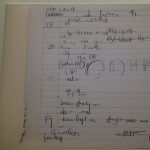The Inverted Pyramid Style of Studying
If you’ve ever had a journalism class, then you know what the inverted pyramid style is in theory. If you’ve ever read a news story, then you know what the inverted pyramid style is in practice.
Think about the imagery. A pyramid by itself has a wide base with two sides that converge upward to a single point. Flip that on its head, and you have the base up top and the point down below—biggest to smallest.
When journalists write a story in this method, they give you the most important details first and close with the least important while incrementally prioritizing the information from greatest to least in the middle. What does this have to do with studying, and how can it help you to make better grades and score higher on tests?
Let’s take these questions one at a time.
1. What is the Inverted Pyramid’s Connection to Studying?
As you encounter different challenges in your educational journey, you will be forced to prioritize information within a certain subject. Moving further up the ladder, you will even be forced to prioritize subject areas to determine the major that you wish to pursue in college, or even whether you should go to college at all.
Some people are more suited to trade schools, and that’s fine, but they first have to set priorities for learning to determine which fields they are best equipped to handle. So whether you are working towards mastery of a subject or you are setting a course for your future, you need to know the inverted pyramid style.
2. How can the Inverted Pyramid Make You a Better Student?
The two things that matter the most to institutions of higher learning are test scores and grades. While extracurricular activities are also important in that they demonstrate how well you manage responsibility, let’s focus instead on these two criteria from the academic side. On the subject of grades, the inverted pyramid teaches you to enumerate the items that you need to know most for testing and deeper understanding of continued concepts within a specific content area.
By knowing what the key drivers of the subject area are before anything else, you will be equipped to handle whatever a quiz or homework throws your way. This usefulness continues into the realm of standardized testing by placing you in the best possible position to know the material that will be presented. It also helps you to better manage the test taking session in allowing you to devote the most time to the concepts and questions that dominate the exam.
Therefore, if you have to end up guessing—and you should when running out of time—you can at least limit those guesses to the least important sections of the exam (i.e. What will cost you the least amount of points?)
The next time you read a news story, notice how the writer moves from one fact to the next. Pull the facts out into a short list and study how the level of importance for each falls for every transition. Apply this method to your current unit of study, and watch your performance soar.









